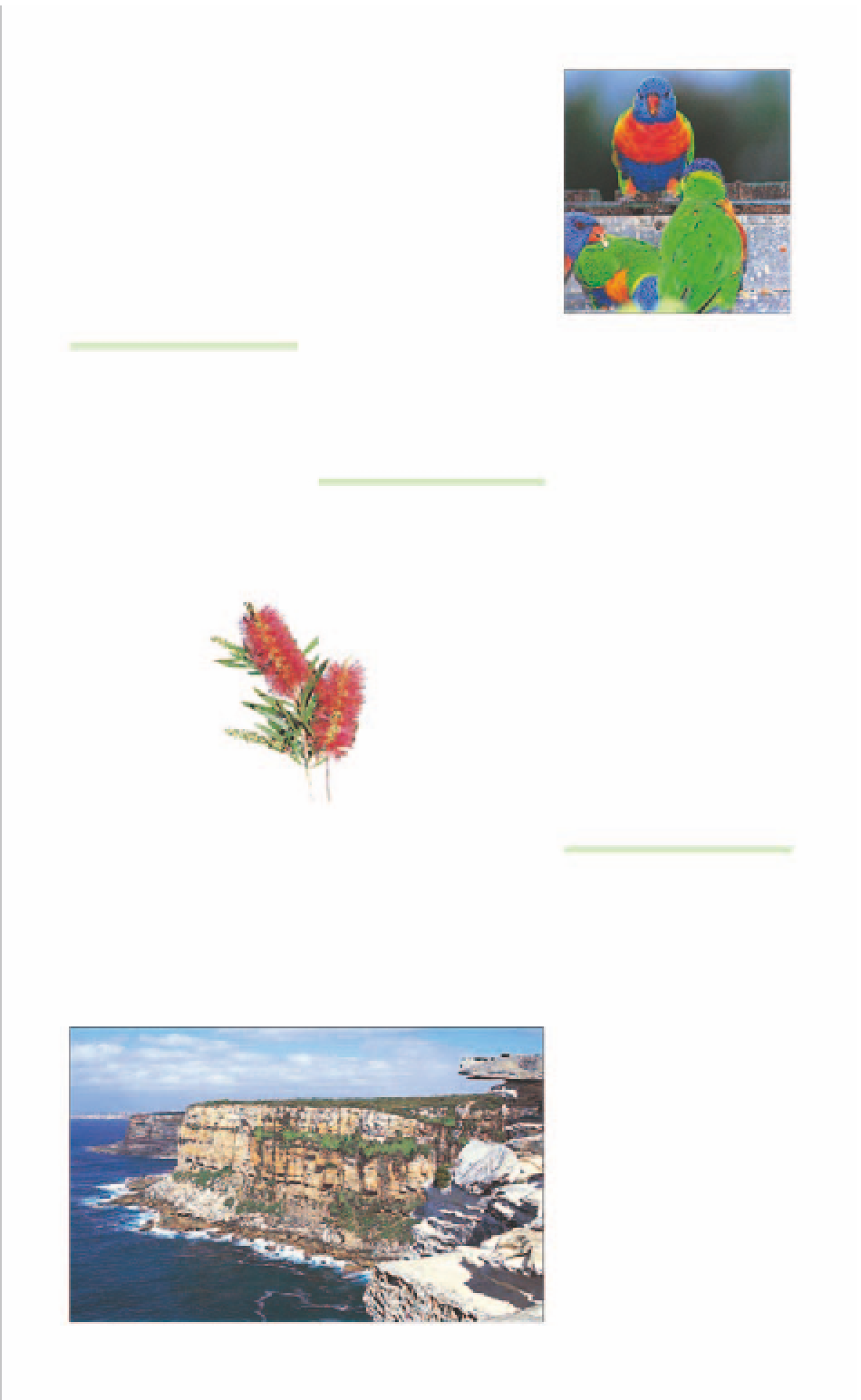Travel Reference
In-Depth Information
Exploring the Parks and Reserves
Despite 200 years of European settlement, Sydney's
parks and reserves contain a surprising variety of native
wildlife. Approximately 2,000 species of native plants,
1,000 cultivated and weed species and 300 bird species
have managed to adapt favourably to the changes.
Several quite distinct vegetation types are protected
in the bushland around Sydney, and these in turn
provide shelter for a wide range of birds and animals.
Even the more formal parks such as Hyde Park and the
Royal Botanic Gardens are home to many indigenous
species, allowing the visitor a glimpse of the city's
diverse wildlife.
Colourful and noisy rainbow
lorikeets at Manly's Collins Beach
Two other distinctive plants
are casuarinas
(Allocasuarina
species
)
and banksias
(Banksia
species
)
, both of which attract
smaller birds such as honey-
eaters and blue wrens.
COASTAL HINTERLAND
you poke under rocks and
logs. A common plant in this
habitat is the cabbage tree
palm
(Livistona australis
). Its
heart was used as a vegetable
by the early European settlers.
The soft tree fern
(Dicksonia
antartctica)
decorates the gul-
lies and creeks of moist forest.
You may see a ringtail possum
(Pseudocheirus peregrinus)
nest at the top of one of these
ferns at Bradleys Head. The
nest looks rather like a hairy
football and is found in hollow
trees or ferns and shrubs.
Rainbow lorikeets
(Tricho-
glossus haematodus
) also
inhabit Bradleys Head, as well
as Clifton Gardens and Collins
Beach. Early in the morning,
they shoot through the forest
canopy like iridescent bullets.
One reason Sydney has so
many heathland parks, such
as those found at South Head
and North Head, is that the
soil along the city's coastline
is deficient in almost every
known nutrient. What these
areas lack in fertility, they make
up for in species diversity.
Heathland contains literally
hundreds of species
of plants, including
some unique flora
that have adapted
to the poor soil. The
most surprising ones
are the carnivorous
plants, which rely
on passing insects for
their food. The tiny sundew
(Drosera spatulata)
, so
called because of its
sparkling foliage, is
the commonest of the
carnivorous species. This low-
growing plant snares insects
on its sticky, reddish leaves,
which lie flat on the ground.
You will often stumble across
them where walking tracks
pass through swampy ground,
waiting patiently for a victim.
RAINFOREST AND
MOIST FOREST
Rainforest remnants do exist
in a few parts of Sydney,
especially in the Royal National
Park to the south of the city
(see pp164-5)
. Small pockets
can also be found in
Garigal National Park,
Ku-ring-gai Chase
(see
pp154-5)
and some
gullies running down
to Middle Harbour. The
superb lyrebird
(Menura
novaehollandiae)
is a
feature of these forest
areas. The sugar glider
(Petaurus breviceps)
,
a small species of possum, can
sometimes be heard calling to
its mate during the night.
The deadliest spider in the
world, the Sydney funnel-web
(Atrax robustus
,
see p89)
, also
lives here, but you are
unlikely to see one unless
Red bottlebrush
(
Callistemon
sp.)
OPEN EUCALYPT FOREST
Some of Sydney's finest
smooth-barked apple gums
(Angophora costata
) are in
the Lane Cove National Park.
These ancient trees, with their
gnarled pinkish trunks, lend
an almost “lost world” feeling.
Tall and straight blue gums
(Eucalyptus saligna
) stand in
the lower reaches of the park,
where the soil is better, while
the smaller grey-white scrib-
bly gum
(Eucalyptus rossii)
,
with its distinctive gum veins,
lives on higher slopes. If you
examine the markings on a
scribbly gum closely, you will
see they start out thin, gradu-
ally become thicker, then take
a U-turn and stop. This is the
track made by an
ogmograptis
caterpillar the previous year.
The grubs that made the track
Coastal heathland lining the cliff tops at Manly's North Head






































